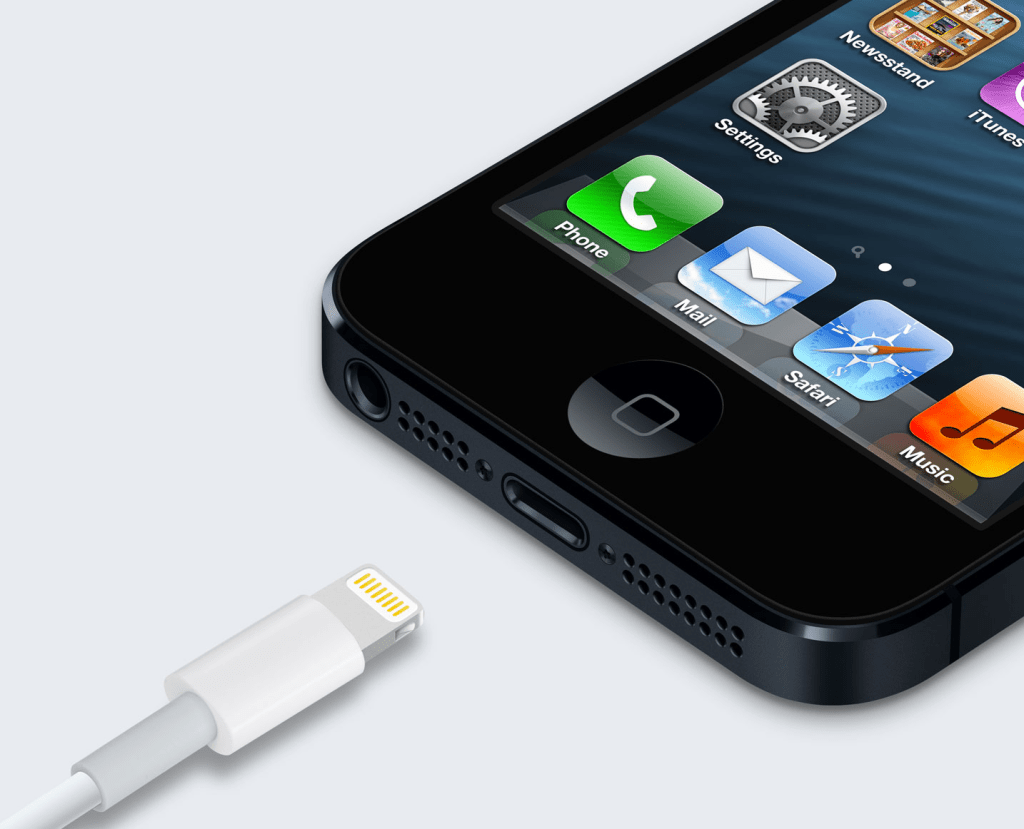Apple changed its long-standing 30-pin dock connector out for an 8-pin new standard called Lightning. But what does that actually mean for users? Well the advantages are mostly passed on through hardware design — not necessarily around performance.
Here’s the skinny: Apple made claims on-stage about improved speed and reliability, thanks to an “eight-signal, all-digital” hardware design. The speed could be better, but this is still based on USB 2.0 specs, not 3.0 or Thunderbolt. That means gains will be modest, not magical. And given that Apple recently made sure that its latest notebooks all have USB 3.0, that seems strange.
But it isn’t that bizarre, really. Apple would have had to do significant redesigns on the inside of the iPhone itself to make that change, and that would have cost more money and affected margins. Engadget senior columnist and long-time mobile industry analyst Ross Rubin told me via email that, while USB 3.0 seems like a logical way to go, that likely won’t happen for a while yet, but is probably an easy switch in terms of the tech in the cabling itself.
“Particularly with the iPad being used as a video storage device and the growing video resolutions of cameras on the iPhone, a speed bump in throughput would have been welcome,” he offered via email. “The USB 2.0 speeds are likely a limitation of the iPhone 5 and not Lightning per se as it’s unlikely Apple would launch an architecture that would lock us to that speed for the next few years.”
Durability also seems like an advantage to Lightning, Apple says, since it has a design with much less of a ridge where cable meets connector, a common breakage point on 30-pin cables. But overall, this isn’t about delivering a better sync or charge experience for users, it’s about the same thing the nano-SIM is: saving space inside the case to allow for thinner, more lightweight designs and larger batteries. In fact, as Apple SVP Phil Schiller told AllThingsD, making an iPhone this thin with the existing dock connector wasn’t physically possible.
Before now, the iPhone’s design has been limited quite a bit by the 30-pin connector architecture. Now design decisions can be dictated by other factors, which obviously has benefits for consumers. For instance the horizontal size of the 30-pin dock connector is at least three or four times the width of the new connector. In a game where millimeters count for a lot, that’s a huge amount of extra room to play with.
Another thing Apple talked about was that the connector works no matter how you plug it in, so there’s definitely some upside in terms of usability. And there are downsides, like the fact that the dock adapter doesn’t support either video or iPod Out, according to Apple’s official specs (Lightning itself does support the same kind of media I/O as the 30-pin connector, however).
Lightning has a trade name that evokes its speedier, low-latency cousin Thunderbolt, but it’s a necessary step based on design decisions, not something designed to push the envelope on user experience. That said, the tangential benefits it makes possible are considerable in themselves, so the short-term disadvantages in terms of ecosystem obsolescence are ultimately probably not a bad trade-off. And Schiller indicated to AllThingsD that it’s not going anywhere anytime soon, so at least we’ll have time to recover from the extreme trauma of the shift this time around.
































Comment